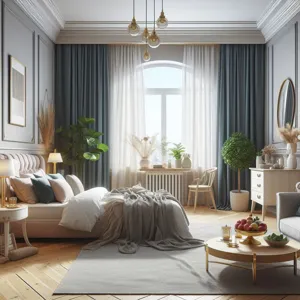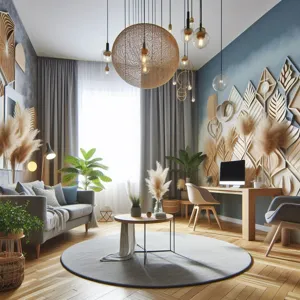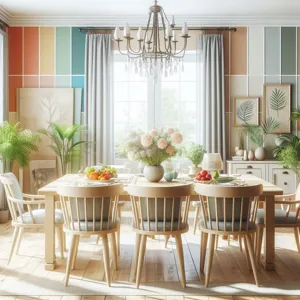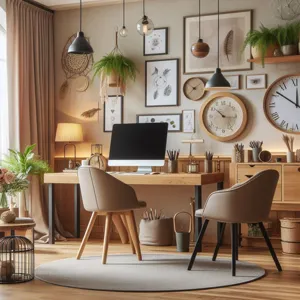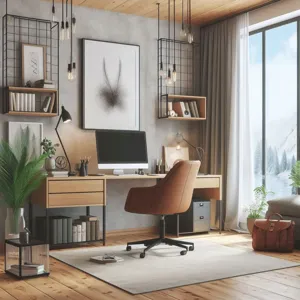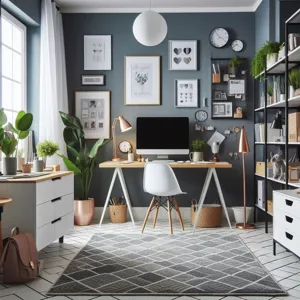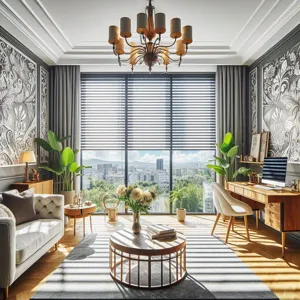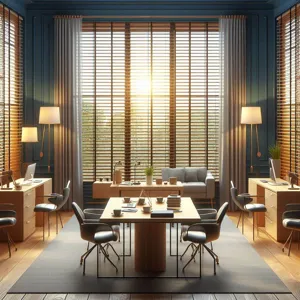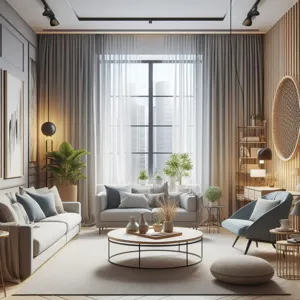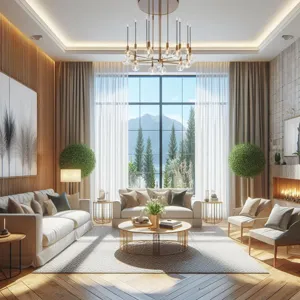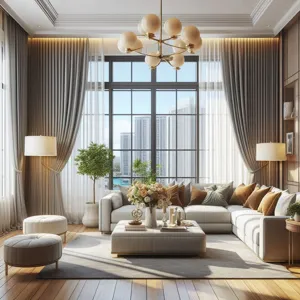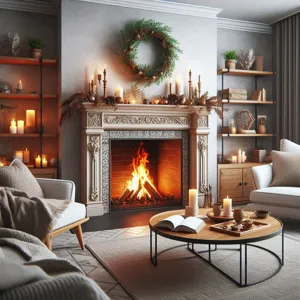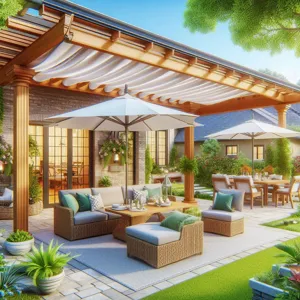Choosing the right shower door is more than just a matter of aesthetics; it’s a crucial element in enhancing both the functionality and style of your bathroom.
With an array of options available, from sleek frameless designs to traditional sliding doors, each type offers its own unique benefits that can transform your daily bathing experience. Whether you’re aiming for a modern, open feel or seeking a solution that maximizes space in a smaller bathroom, understanding the various styles and their advantages is essential. In this comprehensive guide, we’ll delve into the different types of shower doors, explore their pros and cons, and help you make an informed decision that aligns with your personal taste and practical needs. Get ready to elevate your bathroom oasis as we navigate through the world of shower doors and discover the perfect fit for your sanctuary!
1. Introduction to Shower Doors: Why They Matter

When it comes to bathroom design, shower doors might not be the first element that springs to mind, but their impact on the overall aesthetic and functionality of the space is undeniable. A well-chosen shower door can transform a mundane bathroom into a spa-like retreat, while also providing essential practical benefits. They serve not only as a barrier that keeps water contained within the shower, preventing slips and spills, but they also play a crucial role in the overall ambiance, contributing to the room’s style and flow.
Shower doors come in a variety of materials, styles, and configurations, each offering unique advantages that cater to different preferences and needs. Whether you opt for sleek frameless glass that creates an illusion of space, or a classic framed design that adds a touch of traditional elegance, the right shower door can enhance your bathroom’s design while providing easy access and maintenance.
Moreover, shower doors are an investment in your home’s value. An attractive, high-quality shower door can elevate the look of your bathroom, making it more appealing to potential buyers should you decide to sell your home. As you embark on this journey of exploration into the world of shower doors, consider how the right choice can elevate both the functionality and aesthetic appeal of your bathroom sanctuary. In the sections that follow, we’ll delve into the various types of shower doors available, their benefits, and tips to help you select the perfect option for your space.
2. The Importance of Choosing the Right Shower Door
Choosing the right shower door is more than just an aesthetic decision; it’s a crucial factor that can significantly impact your bathroom’s functionality and overall ambiance. With a plethora of options available, from sleek glass panels to sturdy bi-folds, the right choice can enhance your space, improve water retention, and even elevate your daily shower experience.
First and foremost, the right shower door can transform the look and feel of your bathroom. A beautifully designed glass shower door can create an illusion of space, making even the smallest of bathrooms feel open and airy. It allows natural light to flow through, brightening up the room and creating a welcoming atmosphere. Conversely, a poorly chosen door can make your space feel cramped and cluttered, detracting from your carefully curated bathroom design.
Water containment is another crucial aspect to consider. A well-fitted shower door prevents leaks and splashes, protecting your bathroom floor from water damage and mold growth. Different types of doors offer varying degrees of water retention. For instance, a sliding door might work best in a compact space, while a hinged door can provide a more classic look with a tighter seal.
Moreover, the right shower door can enhance safety. A sturdy, well-designed door reduces the risk of accidents, providing a secure barrier that keeps children and pets safe while bathing. Additionally, tempered glass options are available that are designed to withstand high temperatures and impacts, ensuring peace of mind for you and your family.
Ultimately, selecting the right shower door is an investment in both practicality and style. By carefully considering your space, aesthetic preferences, and functional needs, you can choose a door that not only complements your bathroom decor but also enhances your everyday routine. Embrace the opportunity to make a statement while prioritizing the functionality of your sanctuary — the right shower door is a pivotal piece of the puzzle.
3. Frameless Shower Doors: A Modern and Sleek Option

Frameless shower doors have emerged as a popular choice for homeowners seeking a contemporary and minimalist aesthetic in their bathrooms. With their clean lines and unobstructed views, frameless doors offer a seamless transition between your shower space and the rest of the bathroom, creating an illusion of openness that can make even the smallest of spaces feel more expansive.
one of the most significant advantages of frameless shower doors is their ability to enhance the overall design of your bathroom. Without the bulk of metal frames, these doors allow your tile work, fixtures, and finishes to take center stage, showcasing the beauty and craftsmanship you’ve invested in. The crystal-clear glass provides an unobtrusive barrier that highlights your choice of décor, whether it’s an intricate mosaic tile or a sleek marble surround.
In addition to their stunning visual appeal, frameless shower doors are also known for their durability and ease of maintenance. Constructed from high-quality tempered glass, they are designed to withstand the rigors of daily use while resisting wear and tear. This strength translates to a longer lifespan, making them a worthwhile investment for your home. Cleaning is a breeze too; without metal frames that can trap soap scum and grime, a simple wipe-down is often all that’s needed to keep your shower looking pristine.
Moreover, frameless shower doors can contribute to a more luxurious bathing experience. The absence of bulky hardware creates a more open and inviting atmosphere, allowing you to enjoy the tranquility of your shower without feeling confined. This spaciousness can transform your daily routine into a spa-like escape, making each shower feel like a retreat.
In summary, if you’re looking to elevate your bathroom’s style while enjoying practical benefits, frameless shower doors might just be your perfect solution. They embody the perfect blend of elegance, functionality, and durability, ensuring that your bathroom remains a tranquil haven for years to come.
4. Semi-Frameless Shower Doors: The Best of Both Worlds
When it comes to shower doors, semi-frameless options strike an ideal balance between style and functionality, offering the best of both worlds. These doors feature a blend of sturdy framing and a sleek, glass design that enhances the overall aesthetic of your bathroom while providing the necessary support and durability.
The key characteristic of semi-frameless shower doors is the delicate perimeter frame that runs along the edges, providing structural integrity without overwhelming the visual appeal. This frame is typically made from high-quality aluminum or stainless steel, ensuring resistance to rust and corrosion while maintaining a modern look. The glass panels themselves are usually thicker than standard framed doors, often ranging from 3/8 to 1/2 inch, which not only adds to their sturdiness but also enhances the luxurious feel of your shower space.
One of the significant benefits of semi-frameless shower doors is their versatility. They can seamlessly complement a variety of bathroom styles, from contemporary to traditional. The minimalist design allows for a more open and airy ambiance, making your space feel larger and brighter, while still effectively containing water splashes within the shower area.
Additionally, cleaning these doors is typically easier than fully framed options, as there are fewer crevices for soap scum and grime to accumulate. The smooth surfaces of both the glass and the minimal framing allow for quick wipes with a gentle cleaner, keeping your shower looking pristine and inviting.
For homeowners looking to achieve a sophisticated, modern look without sacrificing practicality, semi-frameless shower doors are an excellent choice. They combine elegance and ease of maintenance, enhancing the beauty of your bathroom while providing the durability and functionality you need for everyday use. Whether you’re renovating or building from scratch, these doors deserve a spot on your shortlist.
5. Framed Shower Doors: Affordable and Functional Choices

Framed shower doors are a classic choice for many homeowners looking to strike a balance between affordability and functionality. Constructed with a sturdy metal frame that surrounds the glass panels, these doors offer a robust and reliable option for enclosing your shower space. The framing not only adds durability but also enhances the overall aesthetic of your bathroom, providing a polished and cohesive look.
One of the standout benefits of framed shower doors is their cost-effectiveness. Compared to their frameless counterparts, framed options are generally more budget-friendly, making them an attractive choice for those looking to remodel without breaking the bank. This affordability doesn’t compromise quality; many framed shower doors are designed to withstand moisture and daily use, ensuring they hold up well over time.
Moreover, framed shower doors come in a variety of styles, finishes, and glass types, allowing you to customize your selection to match your bathroom’s décor. Whether you prefer a sleek chrome finish or a more traditional brushed nickel, there’s a framed door to complement your design vision. Additionally, the glass can be clear, frosted, or patterned, providing further options for privacy and style.
Installation of framed shower doors is typically more straightforward than that of frameless doors, making them a preferred choice for DIY enthusiasts. The framing system offers additional support, which can be particularly beneficial in older bathrooms where wall structures may not be perfectly level.
In summary, framed shower doors are an excellent blend of affordability, functionality, and style. They offer a practical solution for those looking to enhance their bathing experience while keeping costs manageable, making them a popular choice in many households. Whether you’re renovating or building from scratch, framed shower doors are a reliable option that can elevate the look and feel of your bathroom space.
6. Bi-Fold Shower Doors: Space-Saving Solutions for Small Bathrooms
When it comes to maximizing space in smaller bathrooms, bi-fold shower doors emerge as a stylish and practical solution. Designed with functionality in mind, these doors feature panels that fold inwards, allowing for a compact entryway that doesn’t encroach upon the limited square footage of your bathroom.
Bi-fold doors are typically made of lightweight materials, such as glass or acrylic, which not only lend a modern aesthetic but also enhance the sense of openness in a confined space. Their sleek design creates a seamless flow, making your bathroom appear larger and more inviting. This is particularly beneficial for urban dwellers or anyone with a cozy bathroom layout where every inch counts.
One of the standout benefits of bi-fold shower doors is their ease of operation. Unlike traditional hinged doors that swing outwards and require ample clearance, bi-fold doors glide effortlessly along a track, allowing you to enter and exit the shower without hassle. This feature is especially advantageous for individuals with mobility challenges, as it reduces the need for awkward maneuvers in tight quarters.
In addition to their practicality, bi-fold doors can be customized to match your bathroom’s decor. Available in various finishes and styles, from clear glass to frosted designs, they can complement any aesthetic, whether you prefer a contemporary look or a more classic vibe. Plus, the option to incorporate decorative hardware adds an extra touch of elegance.
Moreover, bi-fold shower doors are relatively easy to maintain. With fewer gaps and seams compared to other designs, they are less prone to water buildup, making cleaning a straightforward task. A quick wipe-down after each shower is often all it takes to keep them sparkling and free from soap scum.
In summary, bi-fold shower doors provide an ideal solution for small bathrooms, combining space-saving functionality with stylish design. If you’re looking to enhance your bathing area without sacrificing precious floor space, these doors may just be the perfect choice to elevate your bathroom experience.
7. Sliding Shower Doors: Convenience and Efficiency

When it comes to maximizing space and ensuring a seamless bathroom experience, sliding shower doors stand out as a popular choice among homeowners and designers alike. These doors glide effortlessly along a track, offering a contemporary aesthetic while providing practical benefits that enhance your daily routine.
One of the most significant advantages of sliding shower doors is their space-saving design. Unlike hinged doors that require ample room to swing open, sliding doors operate within their designated space. This makes them ideal for smaller bathrooms where every square inch counts. Whether you have a snug corner shower or a more expansive enclosure, sliding doors can be tailored to fit various configurations, ensuring that your bathroom remains functional and stylish.
In addition to their space efficiency, sliding shower doors are known for their sleek, modern look. They create a clean and unobtrusive barrier between your shower and the rest of the bathroom, contributing to an open and airy feel. Available in a variety of materials—such as glass, acrylic, or even framed and frameless options—sliding doors can be customized to match your decor, from minimalist to luxurious.
Maintenance is another area where sliding shower doors excel. With fewer crevices and nooks compared to traditional doors, they are easier to clean and keep free from mold and mildew. Many sliding doors feature a glass coating that repels water and soap scum, making upkeep even simpler. This means you can spend less time scrubbing and more time enjoying your relaxing shower experience.
Furthermore, sliding shower doors provide excellent accessibility. Their design allows for easy entry and exit, making them a suitable choice for individuals of all ages and mobility levels. For families, this means a safer and more convenient bathing option for kids and seniors alike.
Ultimately, choosing sliding shower doors for your bathroom can enhance not only the aesthetic appeal but also the functionality of your space. Their combination of convenience, efficiency, and style makes them a smart investment for anyone looking to elevate their bathing experience. Whether you’re embarking on a full bathroom remodel or simply upgrading your shower, sliding doors are a compelling option worth considering.
8. Hinged Shower Doors: Classic Elegance
Hinged shower doors exude a timeless charm that can elevate any bathroom space. Often seen as the quintessential choice for traditional and contemporary designs alike, these doors are characterized by their ability to swing open, much like a standard door, offering a seamless transition between your bathroom and shower area. Their classic elegance lies not only in their aesthetic appeal but also in their functionality.
One of the most significant advantages of hinged shower doors is their versatility. Available in a variety of materials, including glass and metal, they can be customized to suit your specific style and preferences. Clear glass options create an open, airy feel, allowing light to flow freely and making smaller bathrooms appear larger. On the other hand, frosted or textured glass provides a touch of privacy while still maintaining an inviting atmosphere.
In addition to their beautiful design, hinged shower doors are remarkably easy to operate. The swinging motion requires minimal effort, making them ideal for families or anyone who values convenience. They also tend to provide a more watertight seal compared to sliding doors, which can sometimes leave gaps where water can escape. With proper sealing, you can enjoy a splash-free shower experience, keeping your bathroom floor dry and safe.
Moreover, hinged doors can be an excellent option for those looking to incorporate a luxurious feel into their space. Pairing them with elegant hardware—like polished chrome or brushed nickel handles—can add a sophisticated touch that enhances the overall decor of your bathroom. Whether you opt for a single door or a double door configuration, hinged shower doors can transform your bathing area into a chic retreat.
In conclusion, hinged shower doors are more than just functional; they are a statement piece that combines beauty and practicality. Their classic design, versatility, and ease of use make them a popular choice among homeowners looking to create an inviting bathroom sanctuary. If you’re considering a bathroom upgrade, hinged shower doors might just be the elegant solution you’ve been searching for.
9. Glass Thickness and Quality: What You Need to Know
When it comes to choosing the perfect shower door, understanding glass thickness and quality is essential for both aesthetics and functionality. The thickness of the glass not only affects the overall look of your shower but also plays a significant role in its durability and safety. Generally, shower doors come in thicknesses ranging from 3/16 inch to 1/2 inch.
**3/16-Inch Glass**: This thinner option is often more affordable and can be suitable for lighter use in less demanding environments. However, it may not provide the same level of sturdiness or sound insulation as thicker glass.
**1/4-Inch Glass**: This is a popular choice for many homeowners, offering a balance between cost, durability, and appearance. It tends to be more stable than 3/16-inch glass and provides better resistance to impact, making it a reliable option for everyday use.
**3/8-Inch and 1/2-Inch Glass**: If you’re looking for the ultimate in strength and elegance, consider investing in 3/8-inch or 1/2-inch glass. These thicker panels not only convey a luxurious feel but also ensure maximum durability and safety, reducing the likelihood of breakage or warping over time.
In addition to thickness, the quality of the glass is paramount. Look for tempered glass, which has been heat-treated to withstand higher levels of stress and is significantly more resilient than standard glass. In the event of a break, tempered glass shatters into small, blunt pieces rather than sharp shards, significantly reducing the risk of injury.
Another aspect to consider is the glass finish. Options like clear, frosted, or patterned glass can enhance privacy while adding a unique touch to your bathroom’s décor.
By paying attention to the thickness and quality of your shower door glass, you can ensure that it not only complements your space but also provides the durability and safety needed for years to come. Investing in high-quality materials may require a higher initial cost, but it will pay off in longevity and satisfaction, making your shower experience even more enjoyable.
10. Custom vs. Prefabricated Shower Doors: Pros and Cons
When it comes to choosing the right shower door for your bathroom, the dilemma often lies between custom and prefabricated options. Each choice has its own set of advantages and drawbacks that can significantly impact both the aesthetics and functionality of your space.
**Custom Shower Doors** are designed specifically for your bathroom’s dimensions and style. This tailored approach allows for a perfect fit, accommodating any unique angles or architectural features in your shower. One of the most significant benefits of custom doors is the vast array of materials, finishes, and designs available. Whether you prefer sleek glass, framed or frameless styles, or even artistic etched patterns, the possibilities are nearly limitless. Custom doors also allow for personalized features, such as special hardware or unique installation options that can enhance the overall look of your bathroom.
However, this level of customization comes at a cost. Custom shower doors tend to be more expensive than their prefabricated counterparts due to the bespoke design and labor involved. Additionally, the lead time for production and installation can be longer, as each piece is made to order.
On the other hand, **Prefabricated Shower Doors** offer a more budget-friendly and quicker solution. These doors are mass-produced and come in standard sizes and styles, which means they can often be purchased and installed with minimal wait time. The simplicity of prefabricated options makes them an attractive choice for homeowners looking to renovate quickly or for those on a tighter budget. Many prefabricated options still offer a good range of designs and finishes, catering to various tastes.
However, the main drawback of prefabricated doors is their lack of flexibility in terms of size and style. If your shower doesn’t conform to standard dimensions, you may end up with gaps or awkward fitments. Additionally, the limited customization options can sometimes mean a compromise on personal style or the overall aesthetic of your bathroom.
Ultimately, the choice between custom and prefabricated shower doors hinges on your specific needs, budget, and design preferences. Whichever route you choose, understanding the pros and cons of each will help you make a decision that enhances your bathroom experience while reflecting your personal style.
11. Benefits of Glass Shower Doors: Style and Practicality
When it comes to bathroom upgrades, glass shower doors stand out as a perfect blend of style and practicality. Unlike traditional shower curtains, which can look dated and often harbor mold and mildew, glass doors offer a sleek aesthetic that elevates the overall look of your bathroom. The transparent nature of glass creates an illusion of space, making even smaller bathrooms feel more open and airy. With a variety of designs available—from frameless to semi-frameless and even sliding doors—there’s a glass option to suit every decor style, whether it’s modern, minimalist, or classic.
But the benefits extend well beyond aesthetics. Glass shower doors are incredibly easy to maintain. A quick wipe down with a squeegee after each use can prevent water spots and soap scum from building up, keeping your shower looking pristine. Plus, many manufacturers now offer glass with protective coatings that repel water and reduce mineral deposits, making cleaning even easier.
Another practical advantage is the durability of glass doors. Made from tempered safety glass, they are designed to withstand daily use without the risk of shattering. This robustness adds an element of safety, especially for families with children or elderly members. Additionally, glass shower doors can increase your home’s value, offering a modern touch that potential buyers often find appealing.
In summary, glass shower doors not only enhance the visual appeal of your space but also provide a functional and durable solution that can withstand the test of time. Choosing glass for your shower enclosure is a smart investment that combines elegance with everyday practicality, ensuring your bathroom remains a sanctuary of comfort and style.
12. Maintenance Tips for Shower Doors: Keeping Them Sparkling
Maintaining the pristine appearance of your shower doors is essential not only for aesthetic appeal but also to ensure their longevity. With the right care, you can keep them sparkling and free from damage caused by hard water, soap scum, and mildew. Here are some effective maintenance tips that will help you preserve the beauty of your shower doors.
**1. Regular Cleaning:** Establish a consistent cleaning routine by wiping down your shower doors after each use. A squeegee or microfiber cloth can effectively remove water spots and prevent soap scum buildup. Aim to do this daily or after each shower to make cleaning easier and maintain clarity.
**2. Use the Right Cleaners:** Avoid harsh chemicals that can damage the finish of your shower doors. Instead, opt for natural solutions like vinegar and baking soda. A mixture of equal parts vinegar and water can dissolve mineral deposits, while baking soda can be used as a gentle scrub to tackle tougher stains. For glass doors, a high-quality glass cleaner will provide a streak-free shine.
**3. Address Hard Water Stains Promptly:** If you live in an area with hard water, you may notice stubborn stains building up over time. To combat this, apply a mixture of vinegar and water to the affected areas and let it sit for a few minutes before wiping it away. For persistent stains, a specialized hard water stain remover can be beneficial.
**4. Prevent Mold and Mildew:** Shower doors can be prone to mold and mildew, especially in humid environments. To combat this, ensure proper ventilation in your bathroom by using an exhaust fan or opening a window during showers. Additionally, consider using a mildew-resistant shower curtain or liner if applicable.
**5. Check Seals and Hardware:** Regularly inspect the seals and hardware of your shower doors for any signs of wear or damage. Cracked seals can lead to leaks and water damage, while loose hardware can compromise the door’s stability. Tighten screws and replace seals as needed to maintain functionality.
By incorporating these simple maintenance tips into your routine, you can keep your shower doors looking sparkling clean and functioning optimally for years to come. A little effort goes a long way in preserving their beauty and ensuring a fresh, inviting bathing space.
13. Common Mistakes to Avoid When Choosing Shower Doors
When it comes to selecting the perfect shower doors for your bathroom, avoiding common pitfalls can make all the difference in achieving both functionality and aesthetic appeal. Here are some typical mistakes that homeowners often encounter, along with tips on how to sidestep them.
**1. Ignoring Measurements:** One of the most critical errors is failing to take accurate measurements of your shower space. Before you even begin to browse styles and materials, ensure that you have precise dimensions. A door that’s too small may leave your bathroom feeling drafty and wet, while one that’s too large can lead to installation issues and an awkward fit. Always measure height and width, accounting for any fixtures or obstructions.
**2. Overlooking Style Compatibility:** Shower doors come in a variety of styles, including sliding, hinged, and bi-fold. It’s essential to choose a style that harmonizes with your bathroom’s overall design. For instance, a sleek, modern bathroom might benefit from frameless glass doors, while a more traditional space could be better suited for framed options. Failing to consider your bathroom’s aesthetic can result in a disjointed look that detracts from the overall vibe.
**3. Neglecting Maintenance Needs:** Different shower door materials have varied maintenance requirements. For example, glass doors may require regular cleaning to prevent water spots and soap scum buildup, while acrylic doors may be more prone to scratches. When selecting your shower doors, think about how much time and effort you’re willing to invest in upkeep. Opting for low-maintenance options can save you headaches down the line.
**4. Skimping on Quality:** While it might be tempting to go for the cheapest option, shower doors are an investment that should withstand daily use. Poor-quality doors can lead to leaks, rust, or even safety hazards if they shatter. Instead, consider durable materials and reputable brands that offer warranties, ensuring that you won’t have to replace them sooner than expected.
**5. Forgetting About Safety Features:** Safety should always be a top priority when choosing shower doors. Look for tempered glass options that are less likely to break and shatter. Additionally, consider features like rounded edges or anti-slip surfaces to prevent accidents. Ignoring safety can lead to costly repairs and potential injury, especially in households with children or elderly individuals.
By steering clear of these common mistakes, you can confidently choose shower doors that not only enhance the beauty of your bathroom but also provide lasting functionality and safety. Being informed and thoughtful in your selection process will lead to a satisfying shower experience for years to come.
14. Design Trends in Shower Doors: What’s Popular Now
As we step into a new era of bathroom design, shower doors have evolved beyond mere functionality to become stunning focal points that enhance the overall aesthetic of the space. In 2023, several design trends are taking center stage, showcasing innovative materials, sleek lines, and a blend of form and function.
One of the most popular trends is the use of **frameless glass shower doors**. These minimalist designs create an open and airy feel, allowing natural light to flow freely while showcasing beautiful tile work. Frameless doors are celebrated not only for their modern look but also for their ease of cleaning, making them a favorite among homeowners seeking both style and practicality.
Another trend gaining momentum is the **use of bold, textured glass**. From frosted patterns to etched designs, textured glass adds a unique touch and can provide a sense of privacy without sacrificing light. This trend allows homeowners to express their individuality while still maintaining that coveted open feel.
**Color and finish are also making waves** in shower door design. While clear glass remains timeless, homeowners are increasingly opting for tinted or colored glass options to introduce an unexpected pop of color. Matte black and brushed gold finishes for hardware are particularly popular, adding a touch of sophistication and elegance to the overall design.
Furthermore, the integration of **smart technology** in shower doors is on the rise. From automatic opening mechanisms to integrated lighting that enhances the mood, technology is becoming an essential part of the modern bathroom experience.
Lastly, **eco-friendly materials** are becoming a priority for many consumers. Shower doors made from recycled glass or sustainable materials not only look great but also align with the growing trend of environmentally conscious living.
Incorporating these design trends can transform your bathroom into a luxurious retreat. Whether you prefer the sleekness of frameless glass, the uniqueness of textured designs, or the sophistication of bold finishes, there is a shower door option that can elevate your space and reflect your personal style. Embrace these trends to create a bathroom that is not only functional but also a true expression of your taste.
15. Conclusion: Making the Right Choice for Your Bathroom
As we wrap up our exploration of shower doors, it’s clear that the right choice can dramatically enhance both the functionality and aesthetic appeal of your bathroom. With various types—from sliding and hinged to bi-fold and frameless—each option brings its own unique benefits to the table. The key is to align your selection with your specific needs, preferences, and the overall design of your space.
Consider the size of your bathroom first. In smaller areas, sliding shower doors can save precious space, while larger bathrooms might benefit from the grandeur of a frameless design that creates an open, airy feel. Maintenance is another critical factor; glass doors are often easier to clean and maintain than traditional shower curtains, providing a more polished look that enhances your bathroom’s elegance.
Additionally, think about your lifestyle. If you have children or pets, a sturdy hinged door might offer the durability and security you need, while a simple bi-fold door could be the perfect blend of style and convenience for a guest bathroom. And let’s not forget the style element—choosing a shower door that complements your existing decor can create a cohesive look that ties the whole bathroom together.
Ultimately, the right shower door will not only meet your practical needs but will also elevate your bathroom into a sanctuary of relaxation and style. As you embark on this decision-making journey, take the time to weigh your options carefully, envision how each type fits into your space, and remember that this choice is an investment in your home’s comfort and appeal. Embrace the possibilities, and you’ll find the perfect shower door that transforms your daily routine into a luxurious experience.
In conclusion, choosing the right shower door can significantly enhance both the functionality and aesthetic appeal of your bathroom. From sleek frameless designs that evoke a sense of openness to classic framed options that offer durability and style, there’s a perfect fit for every taste and space. As you explore the various types of shower doors, consider how each option aligns with your lifestyle, maintenance preferences, and design vision. By understanding the benefits of each style, you can make an informed decision that elevates your bathing experience. We hope this guide has illuminated your choices and inspired you to transform your bathroom into a personal retreat. Happy renovating, and may your new shower door bring you countless refreshing moments!


